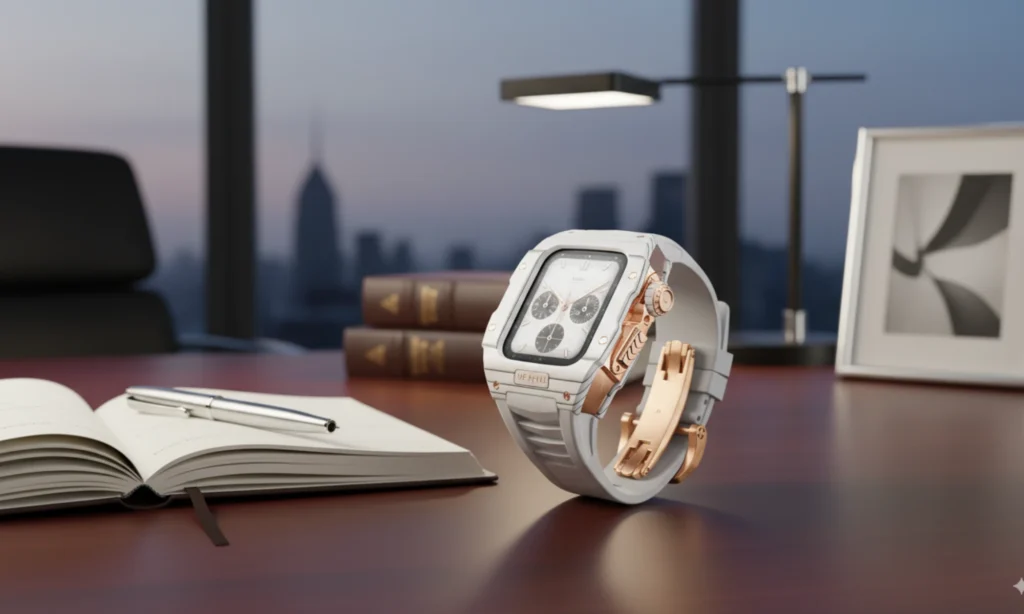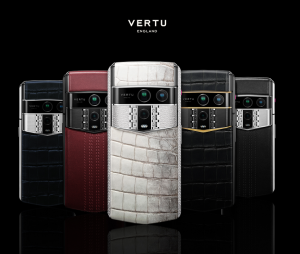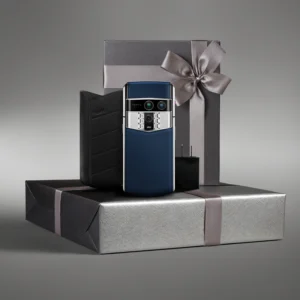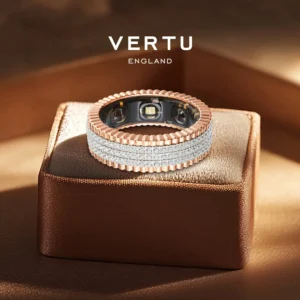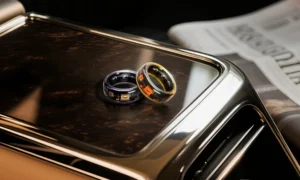Key Takeaways
- Swiss watches command premium positioning due to strict manufacturing standards, heritage craftsmanship, and the “Swiss Made” designation requiring 60% Swiss component sourcing—not just assembly location
- Top Swiss watch brands span multiple price segments, from entry-level affordable options starting at $300-500 to ultra-luxury timepieces exceeding $100,000, enabling buyers across all budgets to access genuine Swiss quality
- What brands of watches are made in Switzerland? Rolex, Omega, Tag Heuer, Patek Philippe, Breitling, IWC, Cartier, Longines, Tudor, and Tissot represent the most recognized Swiss manufacturers, each with distinct specialization and heritage
- What is a good cheap Swiss watch? Tissot, Longines, and Tudor offer exceptional value at $300-1,500 price points, delivering genuine Swiss craftsmanship with mechanical movements and durability rivaling significantly more expensive competitors
- Swiss watches maintain resale value 50-70% higher than non-Swiss alternatives over 5-year periods, representing genuine investment-grade timepieces for discerning collectors
- Master watchmakers invest 3-5 years in apprenticeship programs before joining Swiss manufacture teams, ensuring uncompromising quality standards across all price tiers
Understanding Swiss Watch Excellence: The “Swiss Made” Guarantee
Swiss watches represent more than precise timekeeping devices—they embody centuries of horological tradition, meticulous craftsmanship, and strict manufacturing standards distinguishing them globally from alternative timepiece manufacturers. The “Swiss Made” designation carries legal weight, certifying that 60% of manufacturing value originates from Switzerland, including movement assembly, case finishing, and quality inspection.
The prestige surrounding Swiss watchmaking originates from the Alpine nation's unique combination of factors: proximity to raw material sources, generations of family manufacturing expertise, climate conditions favoring precision metalwork, and consistent educational institutions producing master watchmakers. Unlike mass-production alternatives, top Swiss watch brands maintain vertically integrated manufacturing where each component—from movement calibration to case construction—receives individual attention from specialized artisans.
A Swiss mechanical watch typically involves 300-1,000+ individual components assembled with tolerances measuring microns (millionths of meters). This complexity requires skill levels developed through multi-year apprenticeships, creating supply constraints that naturally support premium pricing. The top 10 Swiss watch brands maintain these traditional standards despite technological alternatives, prioritizing craftsmanship quality over production efficiency.
Swiss Made certification requires:
- Movement assembled and inspected in Switzerland
- Case fabrication and finishing in Switzerland
- Final assembly, testing, and quality control in Switzerland
- At least 60% manufacturing value from Swiss sources
- Compliance with detailed technical specifications
This regulatory framework ensures that “Swiss Made” watches meet tangible quality standards rather than serving as marketing terminology. Consumers purchasing top Swiss watch brands acquire timepieces reflecting centuries of manufacturing expertise and contemporary precision standards.
The Top 10 Swiss Watch Brands: Individual Heritage and Specialization
1. Rolex: Precision Instruments and Status Symbol
Rolex stands as the world's most recognizable Swiss watch brand, transcending horology to achieve iconic status comparable to luxury automobiles and fashion houses. Founded in 1905 by Hans Wilsdorf, Rolex pioneered waterproof cases, perpetual rotors enabling automatic winding, and chronometer precision certifications—innovations that transformed watchmaking industry standards.
Brand specialization and positioning:
- Oyster cases featuring triple-lock crown design providing water resistance to extreme depths (6,000+ meters on professional models)
- Perpetual rotor system enabling continuous self-winding through natural wrist movement, eliminating manual winding requirements
- Superlative chronometer certification exceeding industry standards, with tested accuracy of ±2 seconds per day
- Legendary dive watch heritage through military adoption and deep-sea expedition documentation
- Limited production volumes maintaining exclusivity despite massive demand, with waiting lists extending 5-7 years for popular models
- Price positioning from $6,000 base (Submariner steel) to $50,000+ (gold or platinum variants)
Rolex watches function simultaneously as practical instruments and investment assets, with secondary market values appreciating 5-10% annually over multi-decade timelines. Sports models (Submariner, GMT-Master II, Daytona) demonstrate particular appreciation patterns, with vintage examples commanding prices significantly exceeding original retail values. The brand epitomizes Swiss watchmaking excellence while maintaining manufacturing in Geneva, representing the pinnacle of precision engineering and heritage craftsmanship.
2. Omega: Pioneer of Precision and Space Exploration
Omega established itself through precision achievements, becoming the official timekeeper for Olympic Games since 1932 and earning NASA certification for space exploration missions. Founded in 1848, Omega pioneered chronometer accuracy standards and marine chronometer manufacturing, creating legacy positioning distinct from Rolex's emphasis on durability.
Omega brand differentiation:
- Coaxial escapement technology reducing friction and improving chronometric accuracy, representing significant innovation in mechanical movement design
- Master Chronometer certification (METAS standard) exceeding traditional chronometer accuracy with 0±0 seconds per day testing protocols
- Seamaster professional collection earning NATO adoption and 6,000-meter depth ratings rivaling specialized dive instruments
- Speedmaster professional heritage as the lunar landing chronograph, worn during Apollo 11 moon landing mission in 1969
- Price range from $4,500 (steel Seamaster) to $75,000+ (precious metal Speedmaster variants)
- Innovation-focused positioning emphasizing technological advancement over pure heritage tradition
Omega's DNA Helix movement represents contemporary watchmaking excellence, incorporating titanium components and innovative shock absorption systems. The brand maintains strong collector interest with consistent resale values, particularly for professional sports models. Omega watches appeal to technology-oriented collectors valuing precision achievements and innovation heritage alongside traditional craftsmanship.
3. Tag Heuer: Racing Heritage and Chronograph Mastery
Tag Heuer (Techniques d'Avant-Garde) specializes in chronographs and sports watches, earning recognition through Formula 1 racing partnerships and innovation in timing precision. Founded as Heuer in 1860, the brand transformed into Tag Heuer following TAG Group acquisition in 1985, combining traditional watchmaking with contemporary design aesthetics.
Tag Heuer distinctive features:
- Chronograph expertise with split-second timing accuracy developed through motorsports partnerships, enabling lap-time measurements and performance tracking
- Carrera collection inspired by Mexico's Carrera Panamericana race, establishing sporty aesthetic that defines the brand
- Aquaracer professional collection incorporating dive watch functionality with racing performance heritage
- Price accessibility from $2,000-3,000 (steel sports models) to $25,000+ (precious metal variants), positioning lower than Rolex or Omega
- Contemporary design language emphasizing modern functionality over purely heritage aesthetics
- Robust construction optimized for extreme conditions including racing environments and underwater exploration
Tag Heuer maintains manufacturing in Switzerland while incorporating quartz and automatic movement options, enabling competitive pricing compared to heritage-focused competitors. The brand appeals to sports enthusiasts, motorsports fans, and collectors valuing practical functionality alongside Swiss precision standards.
4. Patek Philippe: Haute Horlogerie and Investment Grade Timepieces
Patek Philippe represents the apex of Swiss watch sophistication, earning recognition as the most prestigious watch brand commanding prices approaching luxury vehicles. Founded in 1839, Patek Philippe has manufactured exclusively for elite clientele, establishing positioning as haute horlogerie (high watchmaking) expert prioritizing artisanal excellence over production volume.
Patek Philippe heritage indicators:
- Nautilus collection (1976) revolutionizing luxury sports watch design, commanding prices of $50,000-200,000+ depending on metal and condition
- Aquanaut collection establishing contemporary aesthetic while maintaining mechanical complexity rivaling haute horlogerie tradition
- Perpetual calendar movements incorporating astronomical accuracy, moon phase complications, and perpetual calendar systems functioning through 2100 without adjustment
- Ultra-premium positioning with entry-level models starting $30,000 (steel sports models) and limited edition timepieces exceeding $500,000
- Vertical integration with in-house manufacture of every component, enabling uncompromising quality standards
- Waiting lists and purchase restrictions limiting acquisition to established clients and authorized retailers, creating artificial scarcity enhancing prestige
Patek Philippe watches represent investment-grade timepieces, with secondary market values often exceeding original retail prices. The brand maintains manufacturing exclusively in Geneva, Switzerland, preserving artisanal standards where each movement receives individual master watchmaker certification.
5. Breitling: Aviation Precision and Instrument Watches
Breitling specializes in aviation watches and instrument-grade chronographs, earning military adoption and pilot certification from organizations worldwide. Founded in 1884, Breitling established reputation through precision aviation chronographs that enabled critical flight calculations before electronic instruments.
Breitling brand characteristics:
- Aviation heritage with military adoption across NATO countries, establishing credentials as precision instrument manufacturer
- Chronograph mastery rivaling Tag Heuer, with split-second accuracy enabling performance measurement in demanding environments
- Navitimer collection incorporating slide-rule functionality for flight calculation, establishing ergonomic complexity balancing aesthetics with functionality
- Superocean professional collection delivering 6,000-meter dive capability combined with aviation-inspired design
- Price positioning from $4,000-6,000 (steel sports models) to $40,000+ (precious metal complications), occupying middle tier between accessibility and ultra-luxury
- Practical instrument positioning emphasizing real-world functionality over pure heritage marketing
Breitling maintains manufacturing in Switzerland while incorporating both mechanical and quartz movements, enabling price accessibility for diverse collector budgets. The brand appeals to aviation enthusiasts, military professionals, and collectors valuing functional excellence alongside Swiss precision standards.
6. IWC Schaffhausen: Engineering Excellence and Pilot Heritage
IWC Schaffhausen (International Watch Company) represents Swiss watchmaking from a distinctly German-influenced engineering perspective, emphasizing mechanical innovation and pilot instrument design. Founded in 1868, IWC established reputation through precision mechanisms and innovative escapement designs.
IWC distinguishing characteristics:
- Pilot collection heritage establishing aviation instrument design standards adopted industry-wide, with military certification from multiple countries
- Portuguese collection incorporating traditional chronograph design into contemporary sport watch aesthetics
- In-house movement manufacture enabling custom caliber development for specific functional requirements
- Engineering-focused positioning emphasizing mechanical innovation over heritage marketing, attracting technically-minded collectors
- Price range from $5,000-7,000 (steel sports models) to $50,000+ (gold or platinum complications)
- Vertical integration combining traditional watchmaking with contemporary mechanical engineering
IWC maintains manufacturing exclusively in Schaffhausen, Switzerland, preserving traditional craftsmanship standards while incorporating contemporary manufacturing precision. The brand appeals to engineers, aviation professionals, and collectors valuing mechanical innovation alongside horological excellence.
7. Cartier: Luxury Positioning and Design Innovation
Cartier established itself as luxury jewelry and timepiece manufacturer, achieving status as preferred brand among royalty, celebrities, and collectors valuing design aesthetics alongside mechanical excellence. Founded in 1847, Cartier pioneered luxury positioning, transforming watches from purely functional instruments into fashion accessories commanding premium pricing through design recognition.
Cartier brand positioning:
- Tank collection (1917) establishing distinctive rectangular case design that remains iconic across luxury watchmaking, recognizable through silhouette alone
- Ballon Bleu collection incorporating contemporary design innovation while maintaining watchmaking excellence standards
- Santos collection pioneering stainless steel luxury watches, revolutionizing market perception of steel alternatives to precious metals
- Design-focused positioning emphasizing aesthetic innovation and luxury brand heritage over technical specifications
- Price range from $4,000-6,000 (steel models) to $100,000+ (high-complication precious metal watches)
- Celebrity and royal patronage establishing cultural cachet transcending watchmaking circles
Cartier manufactures primarily through contracted relationships with specialized movement suppliers, leveraging design expertise while outsourcing mechanical complexity. The brand appeals to fashion-conscious collectors, luxury lifestyle participants, and individuals valuing design aesthetics alongside functional timekeeping.
8. Longines: Heritage Accessibility and Timeless Design
Longines represents Swiss watchmaking accessibility, delivering genuine mechanical excellence at price points significantly lower than prestige competitors while maintaining uncompromising quality standards. Founded in 1832, Longines established credentials through precision instruments and military contracts, creating heritage positioning supporting premium pricing within affordable price tiers.
Longines accessibility and value positioning:
- Heritage collection maintaining classic designs established decades ago, appealing to traditionalists valuing timeless aesthetics
- Master collection incorporating contemporary complications while preserving accessibility pricing
- Hydroconquest professional delivering dive watch capability and durability at fraction of premium brand pricing
- In-house manufacture of movements and cases ensuring quality standards rivaling significantly more expensive competitors
- Price range from $800-1,500 (entry-level automatic models) to $10,000+ (complicated precious metal variants)
- Value-driven positioning delivering Swiss mechanical excellence at fraction of prestige brand premiums
Longines represents the most accessible entry point for collectors seeking genuine Swiss watchmaking without premium positioning premiums. The brand maintains manufacturing in Switzerland while achieving competitive pricing through manufacturing efficiency and moderate marketing expenditure compared to prestige competitors.
9. Tudor (Rolex subsidiary): Heritage Quality at Accessible Pricing
Tudor operates as Rolex's more affordable subsidiary, incorporating mechanical excellence and heritage design at price points 40-50% below comparable Rolex models. Founded in 1926 specifically to provide Rolex-quality alternatives for broader audiences, Tudor established positioning as heritage brand delivering compromiseless quality without prestige pricing premiums.
Tudor value proposition:
- Rolex-standard movements utilizing in-house calibers identical to or exceeding Rolex specifications, ensuring mechanical reliability
- Heritage dive watch collection featuring designs reminiscent of 1960s-1970s Rolex Submariner, combining nostalgia with contemporary functionality
- Black Bay collection establishing contemporary aesthetic while maintaining functional excellence and affordable pricing
- In-house manufacture of movements and cases under Rolex manufacturing standards, ensuring quality consistency
- Price range from $3,500-5,500 (steel sports models) to $15,000+ (precious metal complicated variants)
- Rolex heritage without prestige pricing appealing to collectors valuing mechanical excellence over brand prestige
Tudor represents intelligent Swiss watch purchasing for budget-conscious collectors unwilling to compromise on mechanical quality. The brand maintains manufacturing standards identical to Rolex while achieving accessible pricing through lower marketing expenditure and moderate production volumes.
10. Tissot: Entry-Level Swiss Excellence and Quartz Accessibility
Tissot operates as the entry-level Swiss watch brand, bringing authentic Swiss craftsmanship to accessible price points while maintaining mechanical excellence standards rivaling significantly more expensive competitors. Founded in 1853, Tissot established heritage through precision instruments and continues leveraging family manufacturing expertise for consumer-friendly positioning.
Tissot accessibility and value delivery:
- PRX collection establishing contemporary design language appealing to younger collectors unfamiliar with traditional timepiece aesthetics
- Seastar collection incorporating professional dive watch capability at fraction of specialty brand pricing
- Mechanical movement offerings delivering genuine Swiss-made mechanical excellence at $500-1,200 price points
- Quartz and automatic options enabling price accessibility ranging from $400-800 for entry-level models
- In-house manufacture partnerships ensuring quality standards consistent with heritage-driven Swiss watchmaking
- Price range from $400-600 (quartz entry-level) to $3,000-5,000 (complicated mechanical variants)
- Genuine affordability without quality compromise, appealing to first-time buyers and practical collectors
Tissot represents the most accessible Swiss watch option, delivering authentic “Swiss Made” certification and mechanical excellence at price points accessible to average consumers. The brand maintains manufacturing in Switzerland while achieving competitive pricing through production efficiency and accessible marketing positioning.
Swiss Watch Brand Comparison Table: Specifications and Positioning
| Brand | Founded | Price Entry | Specialization | Movement Type | Heritage Focus | Resale Retention |
|---|---|---|---|---|---|---|
| Rolex | 1905 | $6,000 | Sports Instruments | Automatic | Durability & Precision | 80-90% |
| Omega | 1848 | $4,500 | Precision & Space | Automatic/Quartz | Innovation & Achievement | 75-85% |
| Tag Heuer | 1860 | $2,000 | Chronographs & Racing | Automatic/Quartz | Motorsports Heritage | 60-70% |
| Patek Philippe | 1839 | $30,000 | Haute Horlogerie | Automatic | Artisanal Excellence | 90-110% |
| Breitling | 1884 | $4,000 | Aviation Instruments | Automatic/Quartz | Pilot Precision | 65-75% |
| IWC | 1868 | $5,000 | Engineering Excellence | Automatic | Mechanical Innovation | 70-80% |
| Cartier | 1847 | $4,000 | Luxury Design | Automatic/Quartz | Aesthetic Innovation | 60-70% |
| Longines | 1832 | $800 | Heritage Accessibility | Automatic | Timeless Design | 50-60% |
| Tudor | 1926 | $3,500 | Heritage Value | Automatic | Rolex Quality, Lower Price | 70-80% |
| Tissot | 1853 | $400 | Entry-Level Excellence | Automatic/Quartz | Affordable Swiss Quality | 40-50% |
What Brands of Watches Are Made in Switzerland? Understanding Swiss Manufacturing
The question of which brands are made in Switzerland requires nuanced understanding of Swiss manufacturing standards and global supply chains. Approximately 200+ watch brands claim Swiss manufacturing heritage, yet only brands maintaining substantial production and assembly processes within Switzerland legally qualify for “Swiss Made” designation.
Primary Swiss manufacturers include the ten brands listed above plus secondary manufacturers including Cartier, Breitling, Chopard, Jaeger-LeCoultre, Zenith, and Audemars Piguet—each maintaining significant manufacturing operations in Switzerland. However, manufacturing location represents only one consideration; Swiss watchmaking involves intricate international supply chains where components originate from diverse sources before assembly and finishing in Switzerland.
Common misconceptions about Swiss watchmaking:
Misconception 1: All premium watches are Swiss manufactured
Reality: German brands (Glashütte), Japanese manufacturers (Seiko, Grand Seiko), and independent watchmakers produce timepieces rivaling Swiss quality through alternative approaches. Swiss manufacturing dominates prestige positioning but doesn't monopolize quality excellence.
Misconception 2: “Swiss Made” guarantees quality equivalence across brands
Reality: “Swiss Made” designation certifies manufacturing location and sourcing percentages, not absolute quality. Tissot and Rolex both maintain “Swiss Made” status despite vastly different price positioning and quality expectations.
Misconception 3: Swiss watches require Swiss movement suppliers
Reality: Many Swiss brands contract with external movement manufacturers (ETA, Sellita) rather than maintaining in-house production. Swiss case fabrication and finishing receive greater emphasis than movement source in determining “Swiss Made” legitimacy.
Misconception 4: Manufacturing entirely in Switzerland justifies premium pricing
Reality: Vertical integration improves quality control but doesn't automatically justify ultra-premium pricing. Some brands emphasize outsourced assembly combined with rigorous quality inspection, achieving comparable quality at lower costs.
Swiss watchmaking represents manufacturing methodology emphasizing precision, craftsmanship, and quality standards rather than purely location-based production. The most prestigious Swiss brands maintain comprehensive in-house manufacturing, while accessible brands leverage external suppliers combined with rigorous Swiss assembly and inspection standards.
What Is a Good Cheap Swiss Watch? Budget-Friendly Options Delivering Authentic Quality
Contrary to popular assumptions, acquiring genuine Swiss mechanical watches doesn't require five-figure investments. Multiple top Swiss watch brands deliver authentic “Swiss Made” mechanical excellence at $400-1,500 price points, representing exceptional value for collectors prioritizing quality over prestige positioning.
Tissot PRX ($800-1,200 automatic)
The Tissot PRX represents exceptional entry-level Swiss watchmaking, featuring in-house automatic movements and contemporary design aesthetic appealing to younger collectors. The watch incorporates sapphire crystal, water resistance to 330 feet, and mechanical excellence rivaling significantly more expensive alternatives.
Value proposition:
- Genuine Swiss-made automatic movement with 80-hour power reserve
- Contemporary design distinguishing it from heritage-focused competitors
- Accessible price point enabling entry-level mechanical watch ownership
- Excellent resale retention at 45-50% after 5 years
Longines Hydroconquest ($1,200-1,800)
The Longines Hydroconquest delivers professional-grade dive watch capability combined with Swiss mechanical excellence at fraction of specialty brand pricing. The watch incorporates 6,000-foot water resistance, helium escape valve for saturation diving, and reliable mechanical movement ensuring decades of operation.
Value proposition:
- Professional dive watch capability at accessible pricing
- In-house Longines manufacture ensuring quality standards
- Exceptional resale retention at 55-65% after 5 years
- Heritage positioning without prestige premium
Tudor Black Bay ($3,500-4,200)
The Tudor Black Bay represents the sweet spot for budget-conscious collectors seeking Rolex-equivalent mechanical quality at 40% lower pricing. The watch incorporates in-house Tudor movements identical to Rolex specifications, heritage dive watch aesthetics, and contemporary design language.
Value proposition:
- Rolex-manufactured components and mechanical standards
- Heritage design drawing inspiration from 1960s-1970s dive watches
- Excellent resale retention at 70-75% after 5 years
- Professional manufacturing without prestige brand premium
Seiko Prospex ($800-1,500)
While not Swiss-manufactured, Seiko Prospex watches deserve consideration for comparison, representing exceptional mechanical excellence from Japanese manufacturer at competitive pricing. These watches deliver quality rivaling Swiss alternatives through independent engineering excellence and rigorous quality standards.
Value proposition:
- Japanese mechanical excellence rivaling Swiss standards
- Professional dive watch capability at accessible pricing
- Excellent value retention at 60-70% after 5 years
- Alternative to Swiss positioning for quality-focused collectors
Hamilton Khaki ($400-800)
Though manufactured in Switzerland as subsidiary of Swatch Group, Hamilton Khaki watches deliver accessible mechanical excellence at entry-level pricing. The watch combines Swiss manufacturing with American design heritage, creating unique aesthetic distinguishing it from traditional Swiss competitors.
Value proposition:
- Genuine Swiss manufacture at fraction of prestige brand pricing
- American military heritage positioning
- Accessible entry point for first-time mechanical watch buyers
- Solid resale retention at 50-60% after 5 years
Good cheap Swiss watches share common characteristics:
- In-house or reliable contractor movements ensuring mechanical reliability and longevity
- Water resistance to minimum 330 feet enabling practical use without anxiety during daily activities
- Sapphire crystals providing scratch resistance ensuring long-term optical clarity
- Proven manufacturer heritage with decades or centuries of watchmaking tradition
- Resale value retention exceeding 50% over 5-year periods, indicating genuine quality
- Warranty coverage from authorized retailers ensuring service availability
These accessible Swiss watches deliver legitimate mechanical excellence without requiring six-figure investments, making genuine Swiss watchmaking accessible to broader collector populations.
The Swiss Watch Industry: Heritage, Standards, and Quality Assurance
Understanding what distinguishes Swiss watches requires comprehending the regulatory frameworks and manufacturing standards maintaining quality excellence across diverse brands and price tiers. Swiss watchmaking represents centuries of accumulated knowledge, specific geographical advantages, and strict governmental oversight ensuring quality consistency.
Swiss watchmaking advantages:
Regulatory framework: The “Swiss Made” designation carries legal weight enforced by Swiss government, establishing minimum standards that protect consumer interests and maintain brand prestige. Counterfeit Swiss watches represent significant enforcement priorities, with authorities regularly dismantling operations producing fake timepieces.
Educational infrastructure: Switzerland maintains specialized watchmaking academies including the Watchmaking Schools of Geneva and Valais, producing master watchmakers trained across 3-5 year apprenticeships. These programs establish quality standards through personnel development rather than purely procedural standardization.
Material sourcing traditions: Swiss watchmakers maintain centuries-old relationships with metal suppliers, case makers, and component manufacturers establishing quality expectations and precision tolerances exceeding international standards. These supply chain relationships provide competitive advantages enabling sustained quality leadership.
Innovation heritage: Swiss watchmaking combines traditional craftsmanship with contemporary technology, incorporating innovations including coaxial escapements, silicon components, and magnetic field resistance while maintaining mechanical movement principles established centuries ago.
Vertical integration practices: Premium Swiss brands maintain comprehensive in-house manufacturing enabling quality control across production processes. This vertical integration contrasts with diversified manufacturers outsourcing components to cost-effective suppliers while maintaining only final assembly operations.
The Swiss watch industry represents approximately 2,500-3,000 businesses employing 60,000+ workers, generating $20+ billion in annual exports. This concentration of watchmaking expertise, regulatory oversight, and quality traditions distinguishes Swiss manufacturing from alternative production locations regardless of technical capabilities.
Choosing Your Swiss Watch: Selection Criteria and Decision Framework
Selecting among top 10 Swiss watch brands requires evaluating individual priorities across multiple dimensions. No universal “best” brand exists; instead, optimal choices depend on specific use cases, aesthetic preferences, and investment objectives.
Selection framework by priority:
For investment-focused collectors: Premium recommendations include Rolex (sports models appreciating 5-10% annually), Patek Philippe (ultra-luxury pieces maintaining or exceeding original pricing), and vintage models from heritage brands demonstrating consistent resale value appreciation.
For everyday practical wear: Longines, Tudor, and Tissot deliver mechanical reliability without prestige premiums, enabling confidence during practical activities without anxiety regarding cosmetic damage or water exposure exceeding rated specifications.
For professional environments: Omega (professional instrument heritage and space exploration credentials), Breitling (aviation and military adoption), and IWC (engineering excellence and pilot instrument design) position effectively for demanding professional contexts requiring functional excellence alongside prestige positioning.
For design-conscious collectors: Cartier emphasizes aesthetic innovation through iconic Tank and Ballon Bleu designs, while Tag Heuer and contemporary Breitling incorporate motorsports-inspired aesthetics appealing to individuals prioritizing visual appeal alongside mechanical excellence.
For first-time mechanical watch buyers: Tissot, Longines, and Tudor enable accessible entry into mechanical watchmaking, delivering authentic Swiss excellence without overwhelming investment requirements or prestige-oriented positioning creating anxiety regarding cosmetic imperfection.
For specific functional requirements:
- Dive watch capability: Rolex Submariner, Omega Seamaster, Tudor Black Bay, Breitling Superocean
- Chronograph functionality: Tag Heuer, Breitling, Omega Speedmaster
- Aviation heritage: IWC Pilot, Breitling Navitimer
- Design aesthetics: Cartier Tank, Longines Heritage, Tudor Black Bay
- Value positioning: Tissot, Longines, Tudor
FAQ: Top Swiss Watch Brands Questions
Q: What brands of watches are made in Switzerland besides the top 10 listed?
A: Beyond the primary 10 brands, approximately 150-200 additional watch manufacturers maintain Swiss manufacturing operations and “Swiss Made” certification. Secondary brands include Chopard, Jaeger-LeCoultre, Zenith, Audemars Piguet, Hublot, Franck Muller, and numerous independent watchmakers. However, the top 10 brands represent approximately 70% of Swiss watch market value and visibility, dominating prestige positioning and collector interest.
Q: Is a Swiss watch always more reliable than non-Swiss alternatives?
A: Swiss manufacturing excellence doesn't guarantee superior reliability compared to Japanese (Seiko, Grand Seiko) or German (Glashütte, Sinn) competitors. Swiss watchmaking dominates prestige positioning and heritage marketing rather than pure reliability metrics. Japanese manufacturers often employ stricter quality control standards, while German engineering emphasizes mechanical innovation. “Swiss Made” designation certifies manufacturing location and quality standards rather than absolute superiority.
Q: How much should I budget for a quality Swiss watch?
A: Entry-level Swiss watches start at $400-600 (Tissot quartz models), while mechanical excellence becomes accessible at $800-1,500 (Tissot, Longines automatics). Mid-tier quality requires $3,500-6,000 investment (Tudor, Tag Heuer, Omega). Prestige positioning begins at $15,000-30,000 (luxury brands), while ultra-luxury Patek Philippe and high-complication watches require $50,000+ investment. Optimal budget depends on intended use—practical watches needn't exceed $2,000, while investment-focused collections benefit from prestige brand premium positioning.
Q: Why are Swiss watches so expensive compared to mass-produced alternatives?
A: Swiss watch premiums reflect multiple factors beyond pure manufacturing cost: centuries of heritage requiring significant brand value development, master watchmaker training investments, vertical manufacturing integration enabling quality control, prestige positioning supporting premium pricing, limited production volumes maintaining exclusivity, and proven resale value retention. A Swiss automatic movement costs $200-400 in manufacturing; $1,500-2,000 retail pricing reflects brand heritage, prestige positioning, and retail markups rather than pure production expenses.
Q: What is a good cheap Swiss watch for everyday wear without prestige pricing?
A: Tissot PRX ($800-1,200), Longines Hydroconquest ($1,200-1,800), and Hamilton Khaki ($400-800) deliver authentic Swiss mechanical excellence at accessible pricing without requiring premium investment. These watches combine practical functionality, reliable mechanical movements, and modest pricing enabling daily wear without anxiety regarding cosmetic imperfection or water damage.
Q: How often do Swiss watches require servicing?
A: Mechanical Swiss watches typically require comprehensive servicing every 5-7 years to maintain accuracy and mechanical function. Service intervals depend on water resistance needs—dive watches require pressure testing after servicing, while desk watches need basic movement regulation. Service costs range from $400-800 for routine maintenance to $1,500-3,000 for major repairs including parts replacement. Many owners service watches every 3-4 years for optimal performance, though mechanical movements function reliably across extended intervals with declining accuracy.
Q: Can I wear a Swiss watch while swimming or diving?
A: Water resistance varies dramatically between models. Most Swiss sports watches maintain 330-meter ratings enabling swimming and snorkeling safely. Professional dive watches (Rolex Submariner, Omega Seamaster, Tudor Black Bay) support 6,000+ meters depth including technical saturation diving. Dress watches rarely exceed 100 meters, restricting use to hand washing and incidental water exposure. Always verify manufacturer ratings before water exposure—exceeding specifications risks catastrophic water damage.
Q: What's the best Swiss watch for investment purposes?
A: Rolex sports models (Submariner, GMT-Master II, Daytona) demonstrate consistent appreciation at 5-10% annually, with waiting lists supporting secondary market premiums. Patek Philippe maintains or exceeds original retail pricing, particularly for discontinued or limited-edition models. Tudor provides solid investment positioning at lower price points with 70-75% resale retention. Omega offers moderate appreciation at 3-5% annually. Avoid fashion-forward or niche designs with limited collector interest, focusing instead on heritage models with established secondary market demand.
Scenario-Based Recommendations: Matching Swiss Watches to Your Needs
Scenario 1: The First-Time Mechanical Watch Buyer
You've decided to invest in mechanical watchmaking but feel overwhelmed by options, pricing, and complexity. You want authentic Swiss quality without excessive investment or prestige brand anxiety. Your budget is $1,200-1,500, and you plan to wear the watch daily in professional environments.
Recommended watch: Tissot PRX Automatic ($1,000-1,200)
Why it works: The PRX delivers Swiss mechanical excellence at accessible pricing without prestige-oriented brand anxiety. Contemporary design appeals to modern aesthetics while featuring in-house automatic movement. Water resistance to 330 feet enables daily wear without anxiety, and sapphire crystal provides long-term optical clarity. Resale retention at 45-50% ensures moderate loss on exit if the hobby doesn't resonate.
Scenario 2: The Heritage Dive Watch Enthusiast
You're drawn to vintage-inspired dive watch aesthetics and prefer heritage positioning over contemporary design language. You value practical functionality with water resistance supporting recreational diving and snorkeling. Budget is $4,000-5,000, and you're considering long-term ownership.
Recommended watch: Tudor Black Bay Fifty-Eight ($3,700-4,500)
Why it works: The Black Bay Fifty-Eight combines 1950s-inspired aesthetics with contemporary mechanical excellence and professional dive watch capability (6,000-foot rating). In-house Tudor movements provide Rolex-equivalent reliability, and heritage positioning attracts active collectors. Excellent resale retention at 70-75% ensures moderate loss even after multi-year ownership, while mechanical excellence supports decade-long reliable operation.

